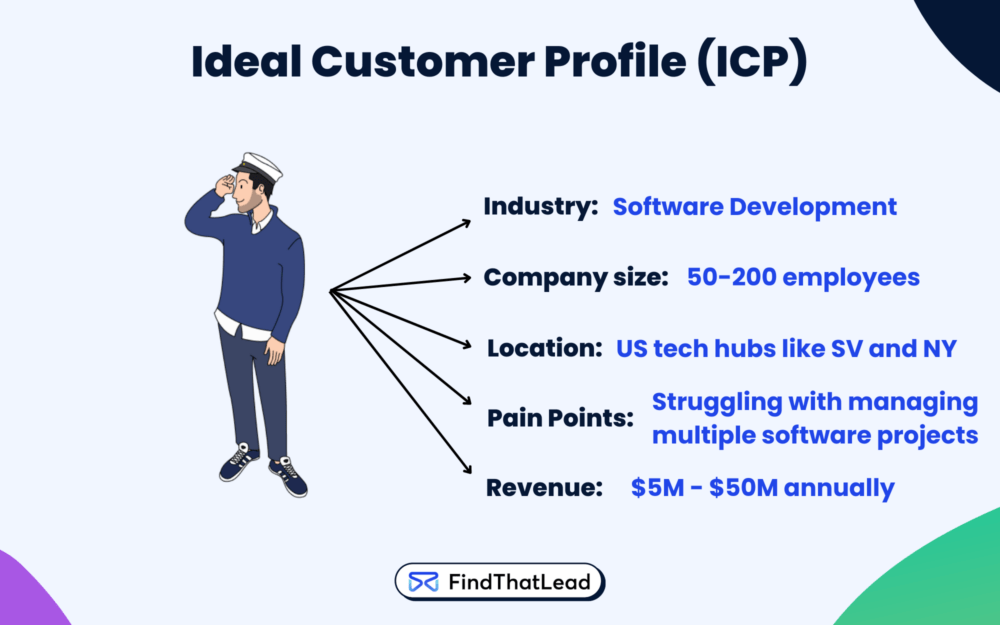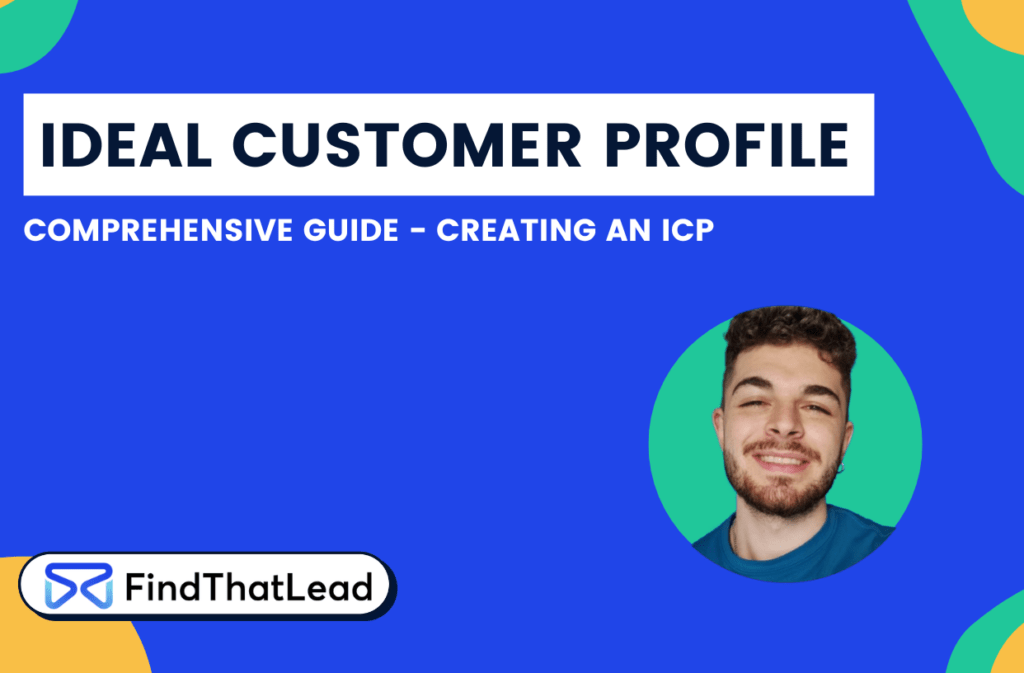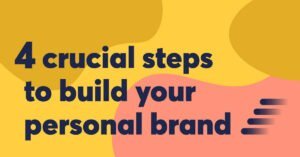Understanding your audience is more than just a good practice, it’s a prerequisite for success.
But how well do you truly know your customers? Are you aware of their needs, their challenges, and what they value most in your product or service? More importantly, do you know who your ideal customer is?
This is where the concept of the Ideal Customer Profile (ICP) comes into play.
The ICP is about identifying who is most likely to thrive by using your product or service, pinpointing the type of customer who will find the most value in what you offer, who will stay with you long-term, and who will contribute to your business’s growth and success.
Shall we start?
What is an Ideal Customer Profile (ICP) in Business?
Before we delve into the specifics of creating an ICP, it’s crucial to understand what an Ideal Customer Profile is and why it’s so important in business. Let’s break it down.
ICP Meaning in Marketing
In the realm of marketing, an Ideal Customer Profile (ICP) is a hypothetical description of the type of company that would reap the most value from your product or service. This isn’t about who might simply buy your product, but who would gain the most benefit from it. It’s about identifying the companies that are the best fit for your product or service.
Why ‘What does ICP stand for in business?’ is a vital question
Understanding what ICP stands for in business is vital because it helps you focus your marketing and sales efforts on the prospects that are the best fit for your product or service. This not only improves efficiency but also enhances customer satisfaction and retention. By targeting your ideal customers, you can attract high-value customers who are more likely to stay with you long-term.
What makes ICP an integral part of an effective business strategy
An ICP is an integral part of an effective business strategy because it helps businesses identify and target high-value customers, tailor their marketing and sales strategies, and ultimately, drive growth and profitability. By understanding who your ideal customers are, you can create products, services, and marketing messages that resonate with them, meet their needs, and deliver value.
Constructing an ICP Framework: Your Guide to Creating an Ideal Customer Profile
Creating an Ideal Customer Profile is a strategic process that requires a deep understanding of your product or service and the value it provides. It’s about identifying the type of customer who will not only buy your product or service but also derive the most value from it. Let’s break down the process into actionable steps.
Who is Your Ideal Customer?
The first step in creating an ICP is to identify your ideal customer. This isn’t just about who is likely to buy your product or service, but who is most likely to succeed using it. Your ideal customer is the one who sees significant value in what you offer, is willing to pay for it, and remains loyal over time.
To identify your ideal customer, consider your most successful customers to date. What characteristics do they share? What industries are they in? What challenges does your product or service help them overcome? These insights will help you paint a picture of your ideal customer.
Establishing Parameters for Your Ideal Customer Profile
Once you have a clear picture of your ideal customer, the next step is to establish parameters for your ICP. These parameters are the defining characteristics of your ideal customer and can include factors such as:
- Industry: What industry or industries does your ideal customer operate in?
- Company size: What is the size of the company in terms of revenue or number of employees?
- Location: Where is your ideal customer located geographically?
- Pain points: What challenges or problems does your ideal customer face that your product or service can solve?
These parameters help you narrow down your focus and make your marketing and sales efforts more targeted and efficient.
Identifying the Characteristics of Your Best Customers
To further refine your ICP, look at your current customer base and identify the characteristics of your best customers. These are the customers who are the most profitable, stay with you the longest, and require the least support.
Consider factors such as how they use your product or service, how often they use it, and how they interact with your company. Do they provide feedback? Do they refer other customers? Do they renew or upgrade their contracts? These characteristics can provide valuable insights into what makes a customer ideal for your business.
Building a Behavioral Profile of Your Ideal Customer
The final step in creating an ICP is to build a behavioral profile of your ideal customer. This goes beyond basic demographics and looks at the behaviors, habits, and preferences of your ideal customer.
Consider factors such as their buying behavior, how they use your product or service, and their preferred channels of communication. Do they prefer email or phone calls? Do they use social media? Do they attend industry events or webinars? Understanding these behaviors can help you tailor your marketing and sales strategies to better reach and engage your ideal customers.

Ideal Customer Profile vs Buyer Persona: Understanding the Difference
While both the Ideal Customer Profile and Buyer Persona are crucial tools in marketing and sales, they serve different purposes and should not be confused. Let’s dive deeper into what sets them apart and how they complement each other.
What is a Buyer Persona?
A Buyer Persona is a semi-fictional representation of an individual who is likely to purchase your product or service. Unlike an ICP, which focuses on the company level, a Buyer Persona focuses on the individual level. It includes detailed information such as demographic data, personal interests, buying behaviors, and pain points.
Creating a Buyer Persona involves researching and understanding your existing customers, surveying or interviewing them, and identifying common characteristics. The result is a detailed profile that represents a segment of your target audience and helps you understand their needs, behaviors, and decision-making processes.
How do ICP and Buyer Persona Complement Each Other?
While an ICP provides a broad view of the companies that can benefit from your product or service, a Buyer Persona gives a detailed view of the individuals within those companies. The ICP helps you identify the right companies to target, while the Buyer Persona helps you understand the individuals within those companies and how to engage them effectively.
Together, they provide a comprehensive understanding of your target audience at both a company and individual level. This dual perspective allows you to tailor your marketing and sales strategies to meet the needs of both the company as a whole and the individuals within it.
Why Your Business Needs Both an ICP and a Buyer Persona
Having both an ICP and a Buyer Persona is crucial for effective marketing and sales. The ICP helps you focus your efforts on the companies that are the best fit for your product or service, improving efficiency and ROI. The Buyer Persona, on the other hand, helps you personalize your messaging and approach to resonate with the individuals within those companies, improving engagement and conversion rates.
By understanding both who the right companies are (ICP) and who the right individuals within those companies are (Buyer Persona), you can create more targeted, effective, and successful marketing and sales strategies.
Implementing an Ideal Customer Profile (ICP) in Your Business Strategy
Once you’ve created your Ideal Customer Profile, the next step is to weave it into your business strategy. This isn’t just about having a well-defined ICP; it’s about using that ICP to guide your marketing and sales efforts. Here’s how you can do that.
Turning Your ICP into Actionable Marketing Strategies
Your ICP is a powerful tool that can guide your marketing strategies. It provides a clear picture of who your ideal customer is, allowing you to tailor your marketing efforts to reach and engage these customers effectively.
For example, if your ICP is a small tech startup, you might focus your marketing efforts on channels where these startups are likely to be present, such as tech industry events, online forums, and specific social media platforms. You can also tailor your messaging to highlight the specific benefits and solutions your product or service offers to this audience.
Using ICP to Boost Sales and Improve Customer Success
Your sales team can use your ICP to identify high-value prospects and tailor their sales pitches accordingly. By understanding who the ideal customer is, they can highlight the benefits and solutions that are most relevant to these customers, improving the chances of closing the sale.
Your customer success team can use your ICP to provide better support to your customers. By understanding what your ideal customers need to succeed, they can proactively offer resources and support to meet those needs, improving customer satisfaction and retention.
The Power of an Ideal Customer Profile in Business Growth
Implementing an ICP in your business strategy is not just about improving marketing and sales; it’s about driving business growth. An effective ICP can help you attract high-value customers, improve customer satisfaction and retention, and ultimately, increase revenue and profitability.
By focusing your efforts on the customers who are the best fit for your product or service, you can improve efficiency, reduce costs, and drive sustainable growth. That’s the power of an Ideal Customer Profile.







 BONUS:
BONUS: The Challenge: Join this free course and I guarantee that after 5 days you will have the necessary skills to start generating B2B clients Growth Hacking and Prospecting techniques.
The Challenge: Join this free course and I guarantee that after 5 days you will have the necessary skills to start generating B2B clients Growth Hacking and Prospecting techniques.